Introduction
Shepherd’s purse, scientifically known as Capsella bursa-pastoris, is a humble yet revered leafy green that has graced Chinese tables for centuries. Revered for its delicate flavor and robust nutritional profile, this wild edible plant thrives in temperate regions and is a staple in traditional Chinese cuisine. Often referred to as “jìcài” in Mandarin, shepherd’s purse is celebrated for its earthy, slightly peppery taste, which becomes milder when cooked. Stir-frying, or chǎo in Chinese, is the quintessential method to prepare this vegetable, preserving its vibrant color, crisp texture, and nutrients. This article delves into the art of stir-frying shepherd’s purse, offering a detailed guide to crafting this dish while exploring its cultural significance, health benefits, and culinary versatility.
The Humble Beginnings of Shepherd’s Purse
Native to Eurasia, shepherd’s purse has naturalized across the globe, from European meadows to North American gardens. Its triangular seed pods, resembling medieval pouches, inspired its English name. In China, it has been foraged and cultivated for over 2,000 years, with mentions in ancient herbals like Shennong Bencaojing (The Divine Farmer’s Materia Medica). Traditionally, it was valued not just as food but also for its medicinal properties—believed to aid digestion, reduce inflammation, and support cardiovascular health.
Nutritional Powerhouse in a Leaf
Modern nutritionists praise shepherd’s purse for its impressive nutrient density. A 100-gram serving provides:
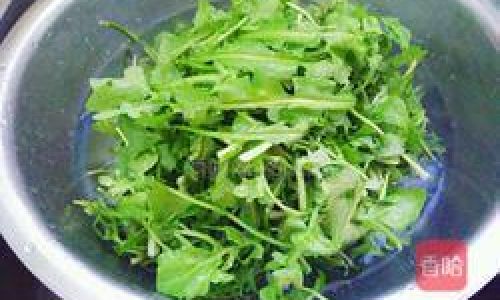
- Vitamin K: Over 500% of the daily recommended intake, crucial for blood clotting and bone health.
- Vitamin C: A potent antioxidant boosting immunity and collagen production.
- Calcium: Essential for bone strength, with higher bioavailability than dairy for some individuals.
- Fiber: Promoting gut health and regulating blood sugar levels.
- Flavonoids: Compounds like quercetin and kaempferol, which combat oxidative stress.
Its low-calorie, high-fiber profile makes it ideal for weight-conscious diets, while its anti-inflammatory benefits align with holistic wellness trends.
Selecting and Storing Shepherd’s Purse
The journey to a perfect stir-fry begins with sourcing the freshest greens. Look for:
- Color: Vivid green leaves with no yellowing or wilting.
- Texture: Crisp, tender stems; avoid those with thick, fibrous bases.
- Aroma: A mild, grassy scent without mustiness.
If foraging, harvest young leaves before the plant flowers, as older leaves may turn bitter. Store unwashed shepherd’s purse in a breathable bag in the refrigerator’s crisper for up to three days. For extended storage, blanch and freeze—though fresh yields the best texture.
Ingredients: Building Flavor Layers
Traditional recipes call for minimal ingredients to highlight the vegetable’s purity, but adaptations abound. Here’s a classic foundation:
- 400g fresh shepherd’s purse: Rinsed thoroughly, pat dry.
- 3 tbsp peanut oil: High smoke point for stir-frying.
- 3 garlic cloves: Minced; substitute with ginger for a warming twist.
- 1 tbsp Shaoxing wine: Adds depth; omit for alcohol-free.
- 1 tsp light soy sauce: Enhances umami without overpowering.
- 1/2 tsp sugar: Balances bitterness.
- 1/4 tsp white pepper: For subtle heat.
- Optional: 50g ground pork, tofu, or dried shrimp for protein.
Preparation: The Devil Is in the Details
-
Cleaning Rituals:
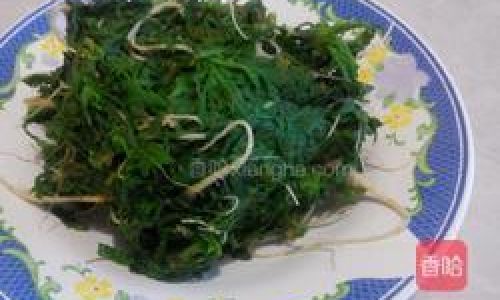
- Submerge shepherd’s purse in cold water, swirling to dislodge grit.
- Trim 1–2cm from stems if fibrous.
- Drain in a colander; spin dry or pat with kitchen towels. Excess moisture steams rather than stir-fries.
-
Mise en Place:
- Mince garlic; set aside to prevent burning.
- If using meat, marinate with 1/2 tsp soy sauce and 1/4 tsp cornstarch for tenderness.
- Prep a small bowl with soy sauce, sugar, and pepper.
The Stir-Fry Technique: Wok Hei Mastery
Stir-frying is a dance of heat and timing. Achieve wok hei, the breath of the wok, with these steps:
-
Heat the Wok:
- Place a carbon-steel wok over high heat until wisps of smoke rise.
- Add oil, swirling to coat evenly.
-
Aromatics First:
- Toss garlic into the oil; stir 10 seconds until golden. Caution: Burnt garlic turns bitter.
-
Protein Addition (Optional):
Push aromatics aside, add meat. Stir-fry until no longer pink, breaking lumps with a spatula.
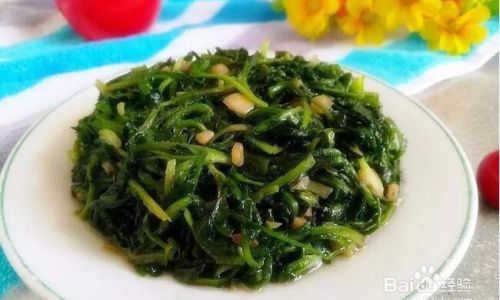
-
Shepherd’s Purse Entrance:
- Add greens in batches if needed. Use tongs to toss, ensuring even cooking.
- The leaves will wilt dramatically—this is normal.
-
Seasoning Symphony:
- Drizzle Shaoxing wine around the wok edge for sizzle and aroma.
- Add soy sauce mixture; toss rapidly to coat.
-
Final Flourish:
- Cook 1–2 minutes until stems are tender-crisp. Overcooking mutes color and nutrients.
- Adjust seasoning; a pinch of salt may be needed.
Variations and Regional Twists
- Sichuan Style: Add doubanjiang (fermented bean paste) and Sichuan peppercorns for a麻辣 (málà) kick.
- Cantonese Delicacy: Garnish with fried shallots and oyster sauce.
- Vegetarian Elegance: Swap meat for wood ear mushrooms and bamboo shoots.
- Korean Adaptation: Incorporate gochujaru (chili flakes) and sesame oil.
Troubleshooting Common Pitfalls
- Soggy Greens: Overcrowding the wok lowers heat. Cook in batches if necessary.
- Bitter Aftertaste: Blanch leaves in boiling water for 30 seconds before stir-frying.
- Lackluster Flavor: Use fresh garlic and high-quality soy sauce; avoid iodized salt.
- Uneven Cooking: Chop stems and leaves separately; add stems first as they take longer.
Serving Suggestions: Beyond the Bowl
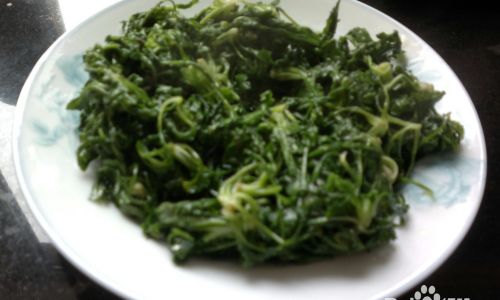
- Rice Pairing: The dish’s subtle flavors complement steamed jasmine rice.
- Noodle Integration: Toss with chow mein noodles and a drizzle of sesame oil.
- Spring Roll Filling: Mix with glass noodles and shrimp for crispy rolls.
- Soup Addition: Simmer in clear broth with enoki mushrooms.
Cultural Significance: From Peasant Kitchens to Imperial Tables
Shepherd’s purse transcends socioeconomic boundaries. During the Qing Dynasty, it was dubbed “百岁羹” (Bǎisuì Gēng, “Longevity Soup”) for its health-giving properties. In rural China, it remains a symbol of resilience—thriving where other crops fail. Today, it graces Michelin-starred menus, testament to its enduring appeal.
Sustainability Note: Foraging Responsibly
As wild shepherd’s purse faces habitat loss, consider cultivation. It grows easily in pots or gardens, requiring minimal care. When foraging, adhere to the “leave no trace” principle—harvest sparingly and avoid contaminated areas.
Conclusion: A Dish That Nourishes Body and Soul
Stir-fried shepherd’s purse is more than a meal; it’s a bridge between generations, ecosystems, and cultures. Whether you’re a seasoned cook or a novice, mastering this dish offers a taste of tradition and a nod to sustainability. Experiment with seasonings, savor the crunch, and let each bite transport you to the lush fields where this humble green first took root.
Final Tip: Pair with a cup of pu-erh tea—its earthy notes harmonize beautifully with the dish’s flavors. Bon appétit!
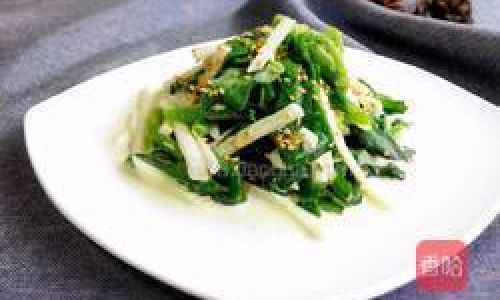


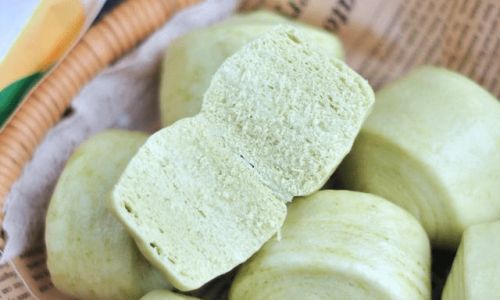
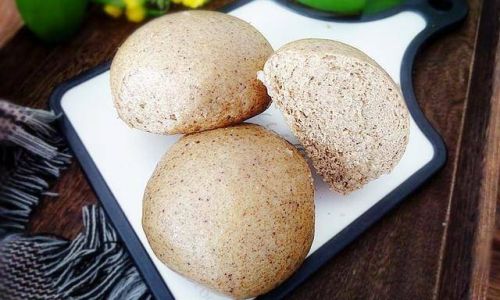

0 comments